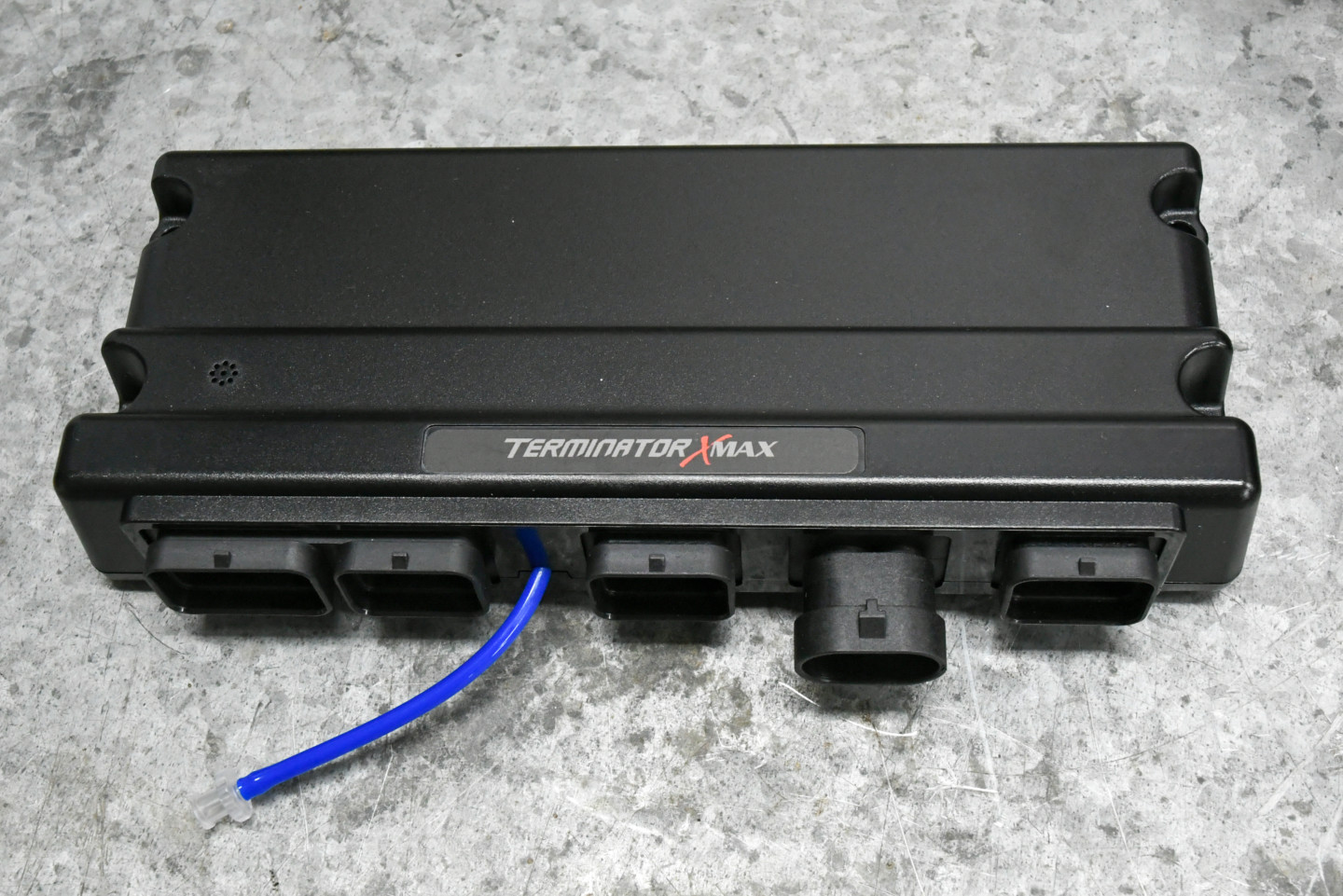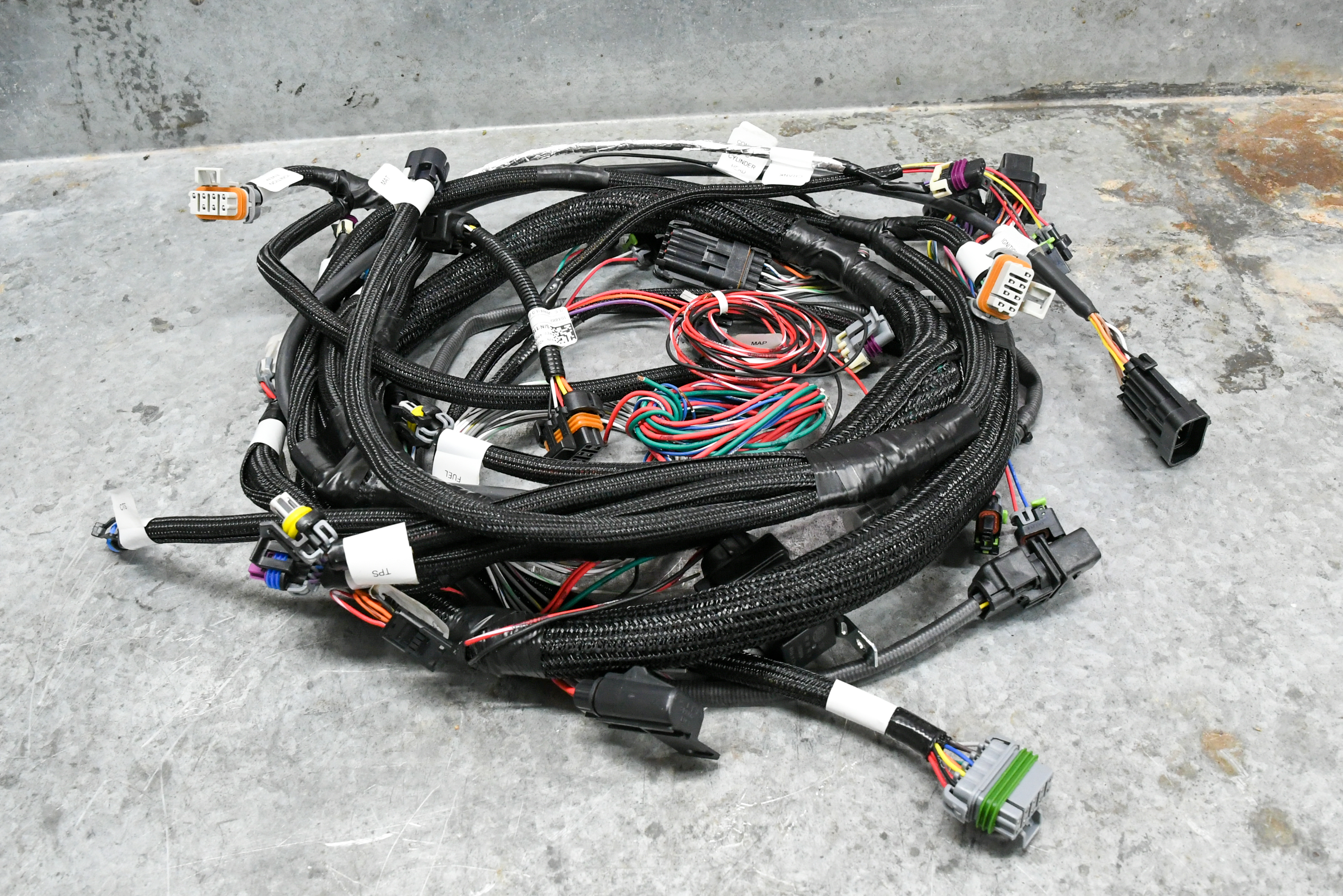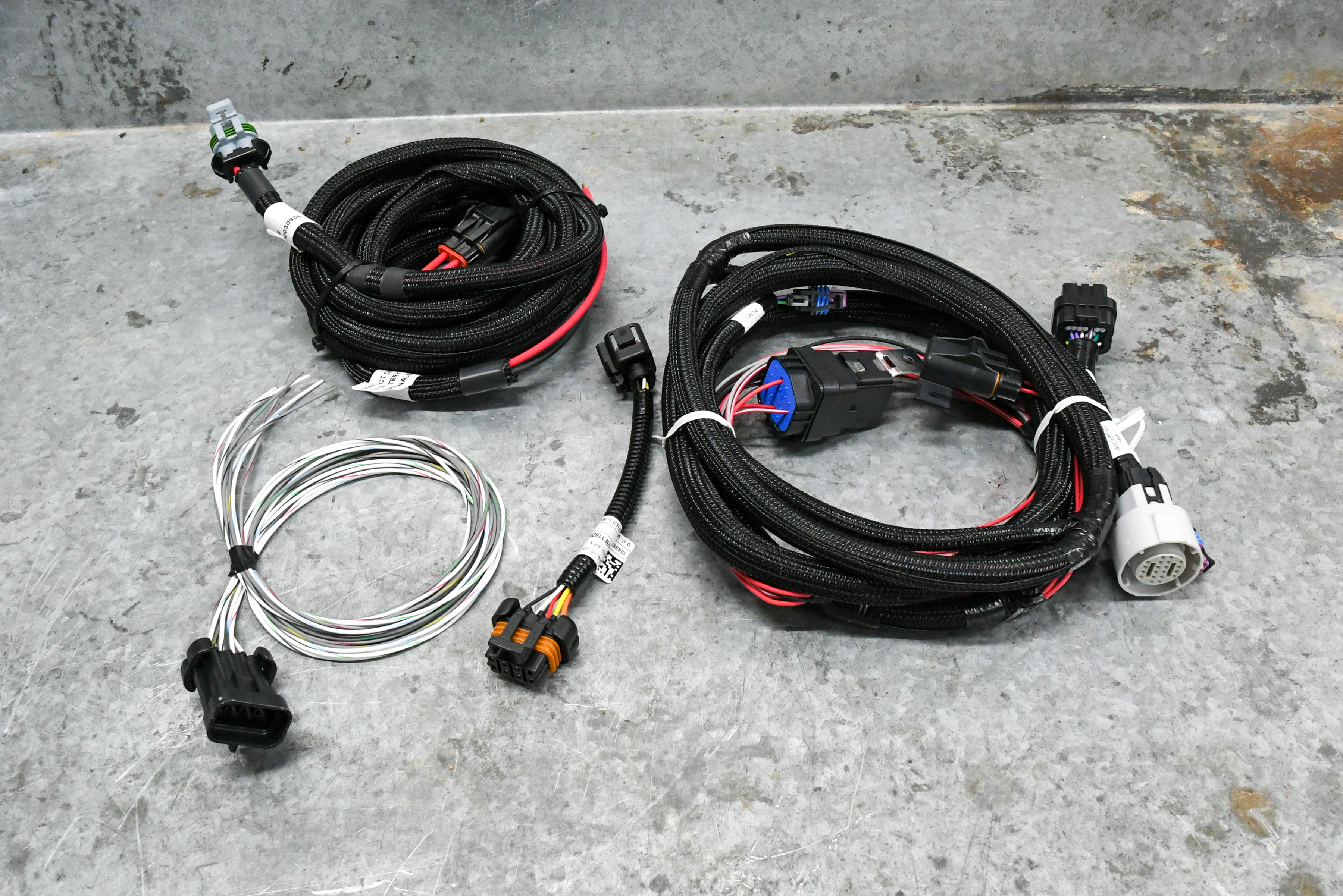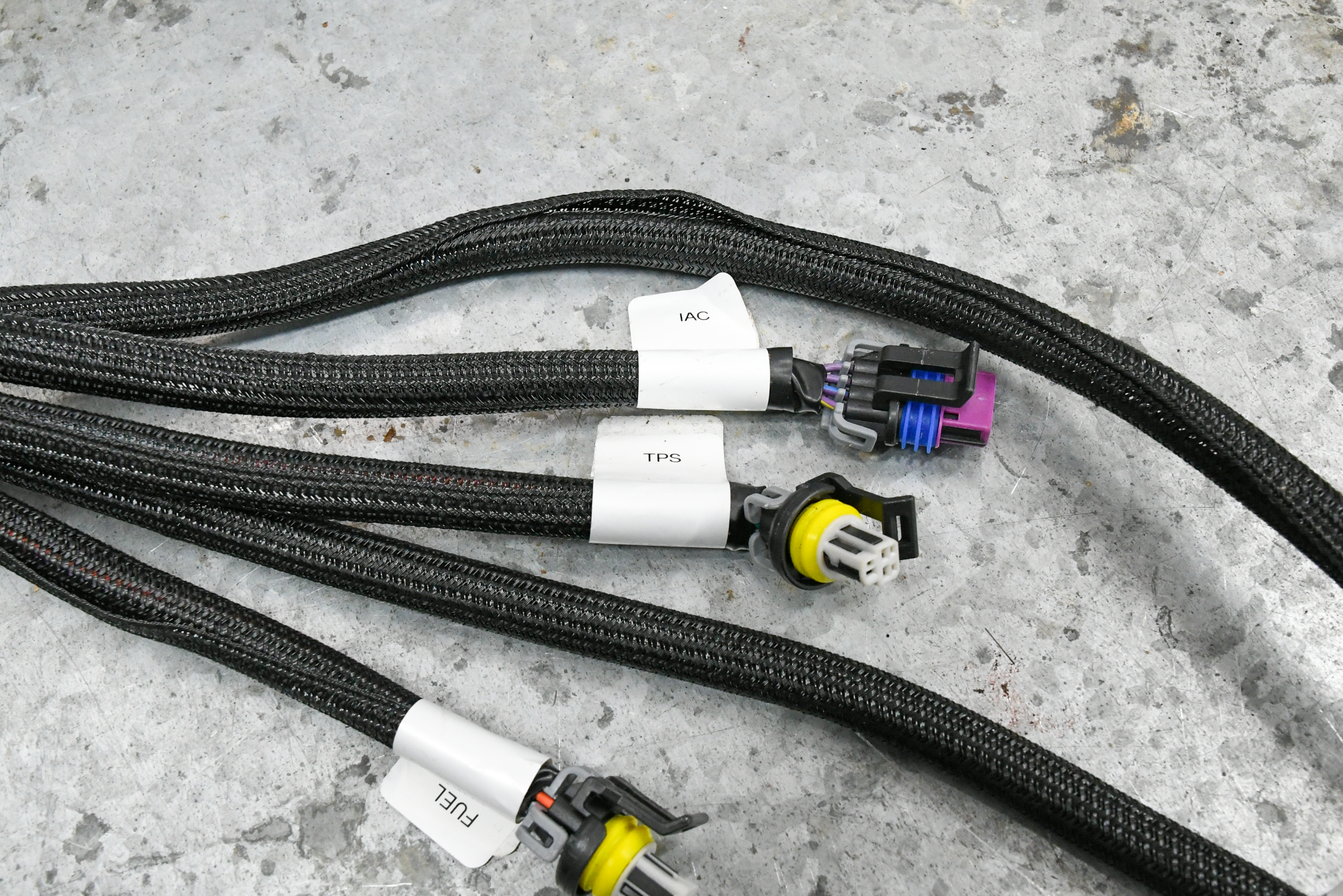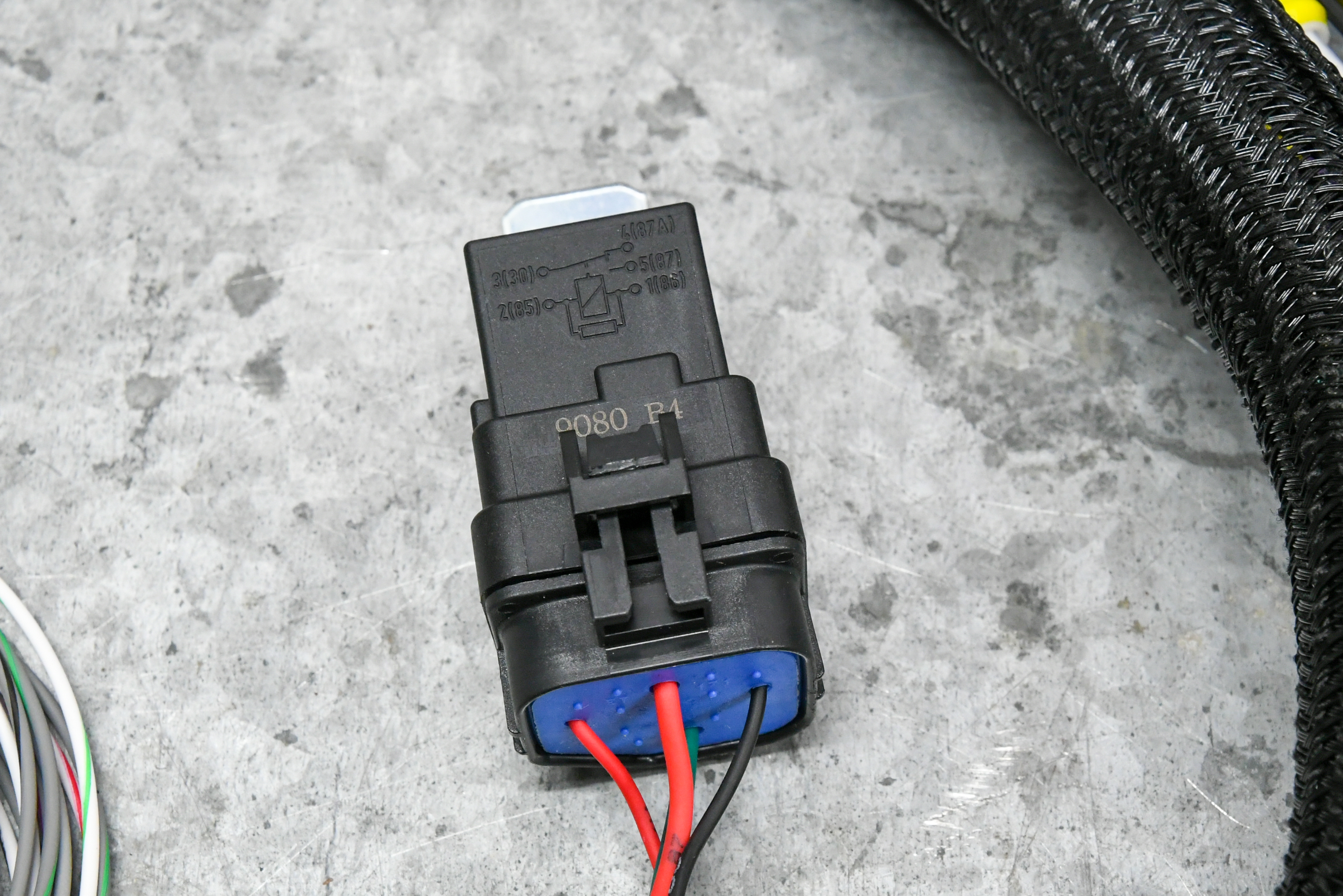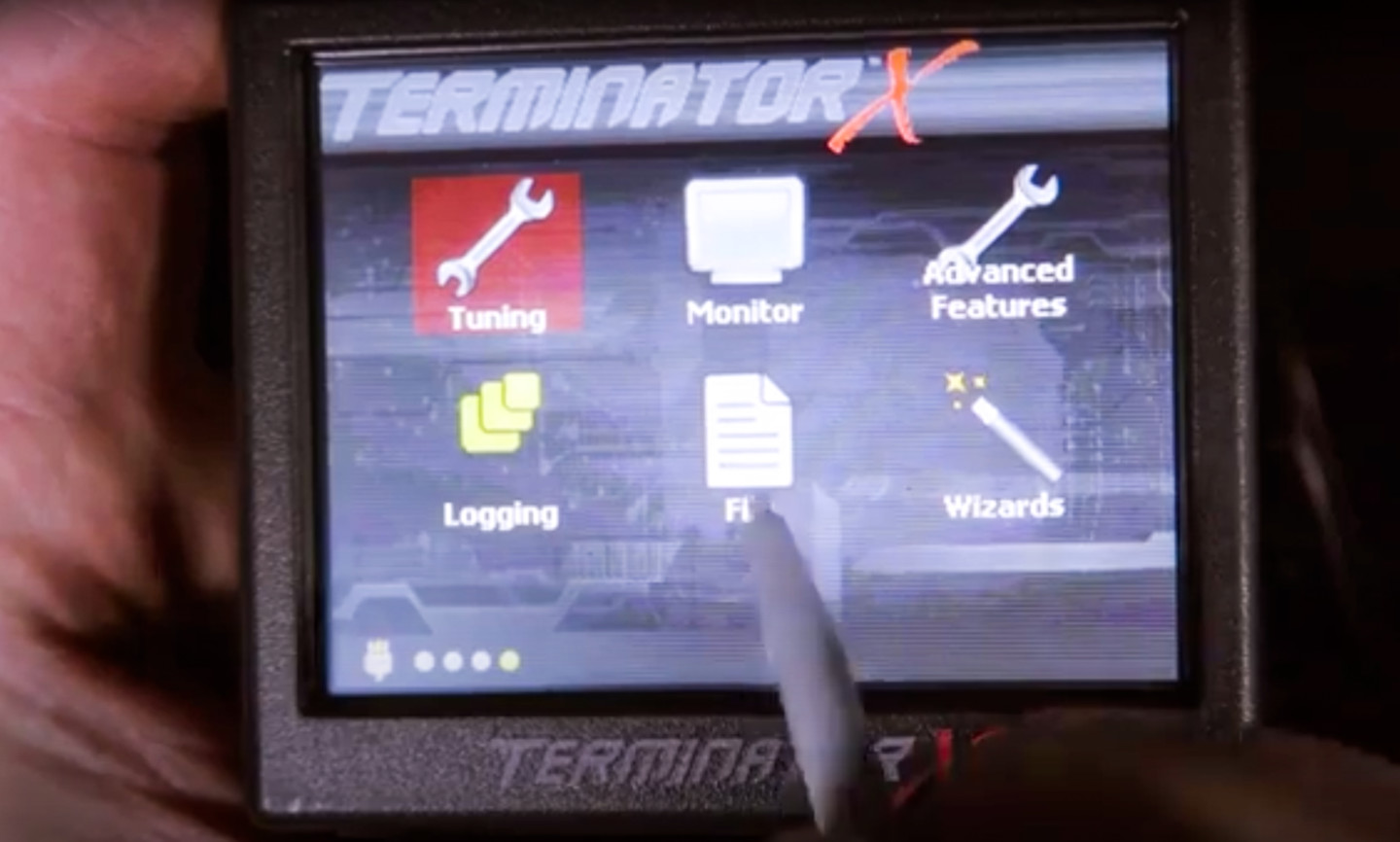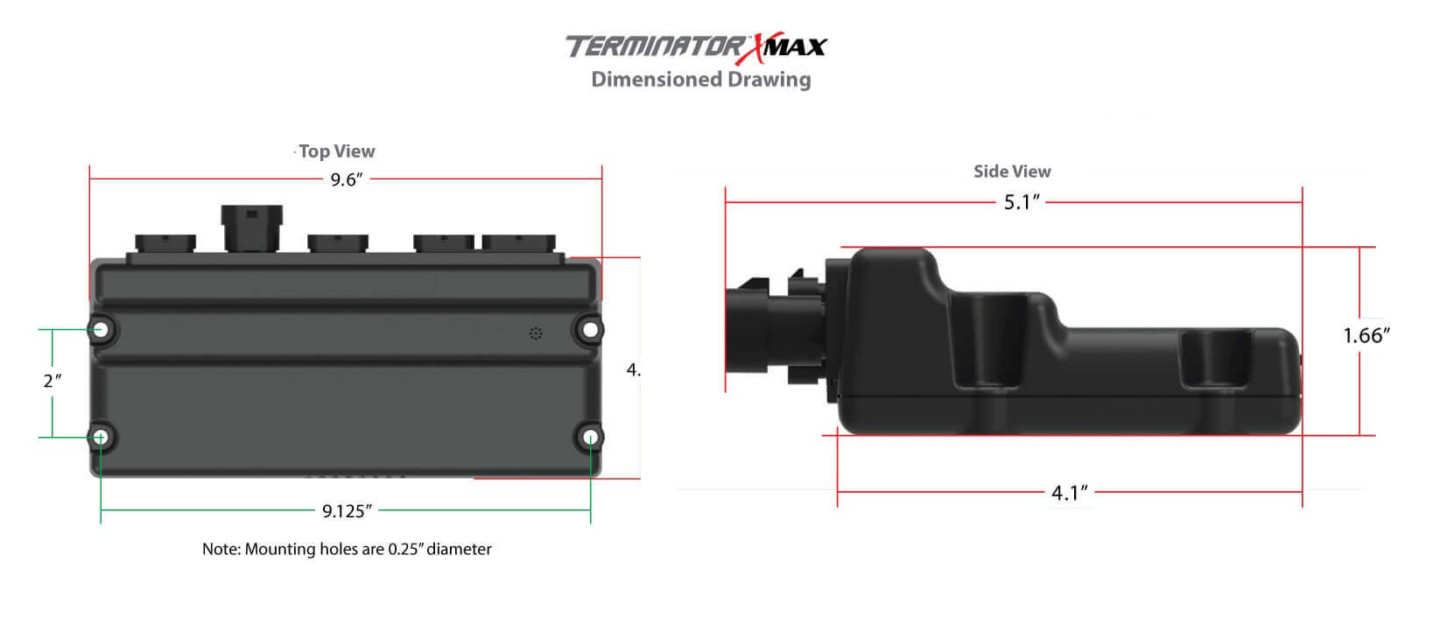The GM ECU is an excellent computer, whether it’s in a factory vehicle or controlling an LS swap. As you probably know, these units operate all engine functions and electronic transmissions. Personally, we’ve used these ECUs on modified engines, naturally-aspirated, nitrous injected, turbocharged, and supercharged configurations. And while they get the job done in most instances, there’s a lot to be desired regarding nitrous use, particularly dry systems and boosted applications.
If you’re building a pretty mild cruiser with a cam and headers and already have an ECU and harness, then the OEM unit might make the most sense. However, suppose you don’t have the above items, and you’re planning on running a power adder or modifying your powerplant often. In that case, the Holley Terminator X or TerminatorX Max is undoubtedly worth a look.
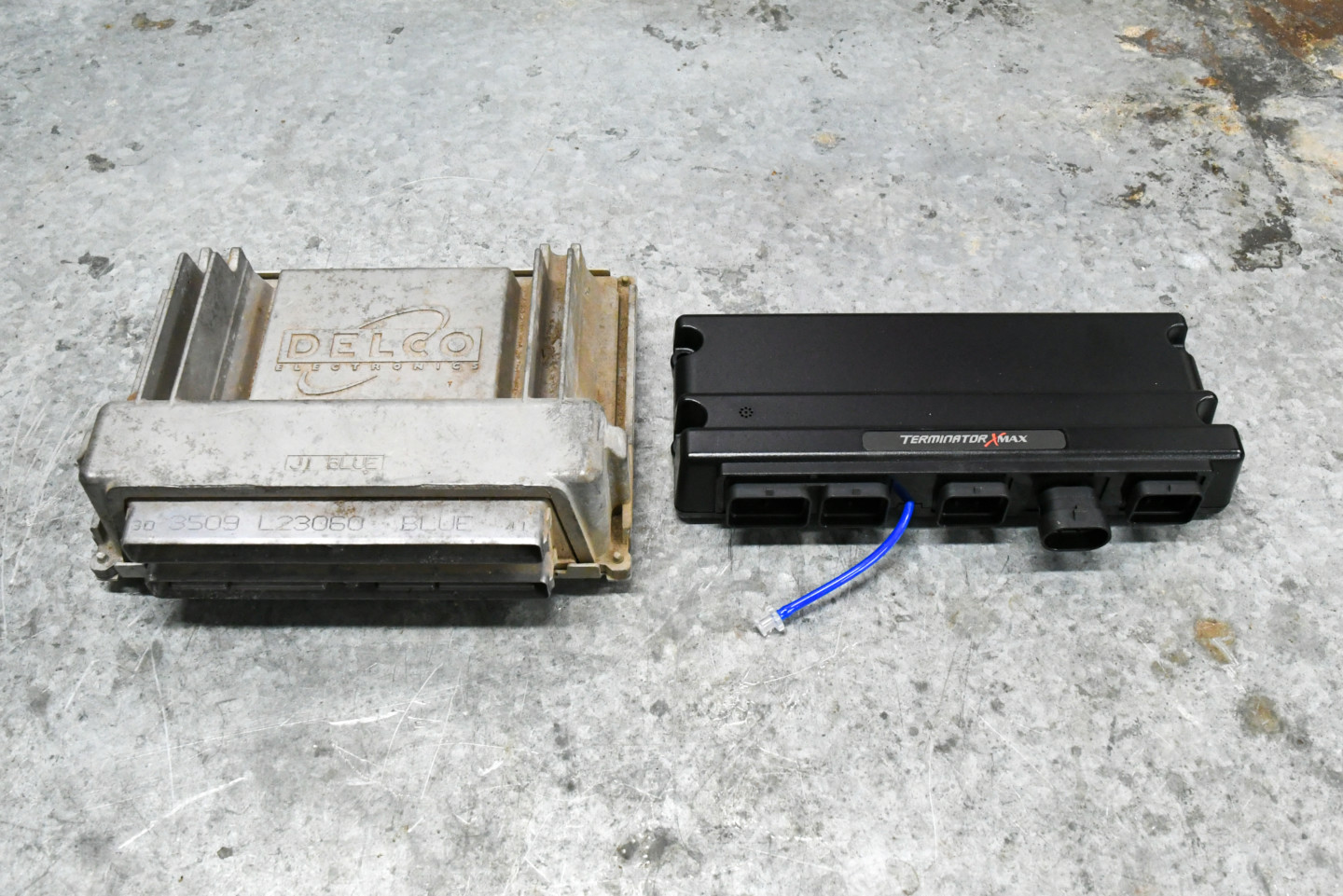
It’s easy to see in this image how much smaller the Terminator X Max is in comparison to the OEM ECU. Its compact size will give you plenty of mounting options.
Price Point
Before we get into the details of what these very different ECUs can or can’t do, let’s look at the price difference. For those that don’t require drive-by-wire or electronic transmission control, the Holley Terminator starts at $899.95. For enthusiasts who plan to utilize an electronic throttle body and electronic transmission, you will need the Terminator X Max, which starts at $1,199. And while you might think this is expensive, hear us out. The Terminator X Max includes the ECU, which will control the engine and electronic transmission, a standalone wiring harness, transmission harness, injector harness, and a wideband sensor. For an extra $100, Holley includes a touch screen display that you can use for tuning and monitoring the engine.
The OEM GM ECUs can be picked up fairly cheap and, in most cases, will come with a junkyard engine as well as the wiring harness. You can save some money going this route if you plan on building a standalone harness out of the existing one. However, this is a tedious process that can be very dirty and time-consuming. Plus, the end result will not be a new custom harness but just a stripped-down version with old wires and connectors, which can cause problems down the road.
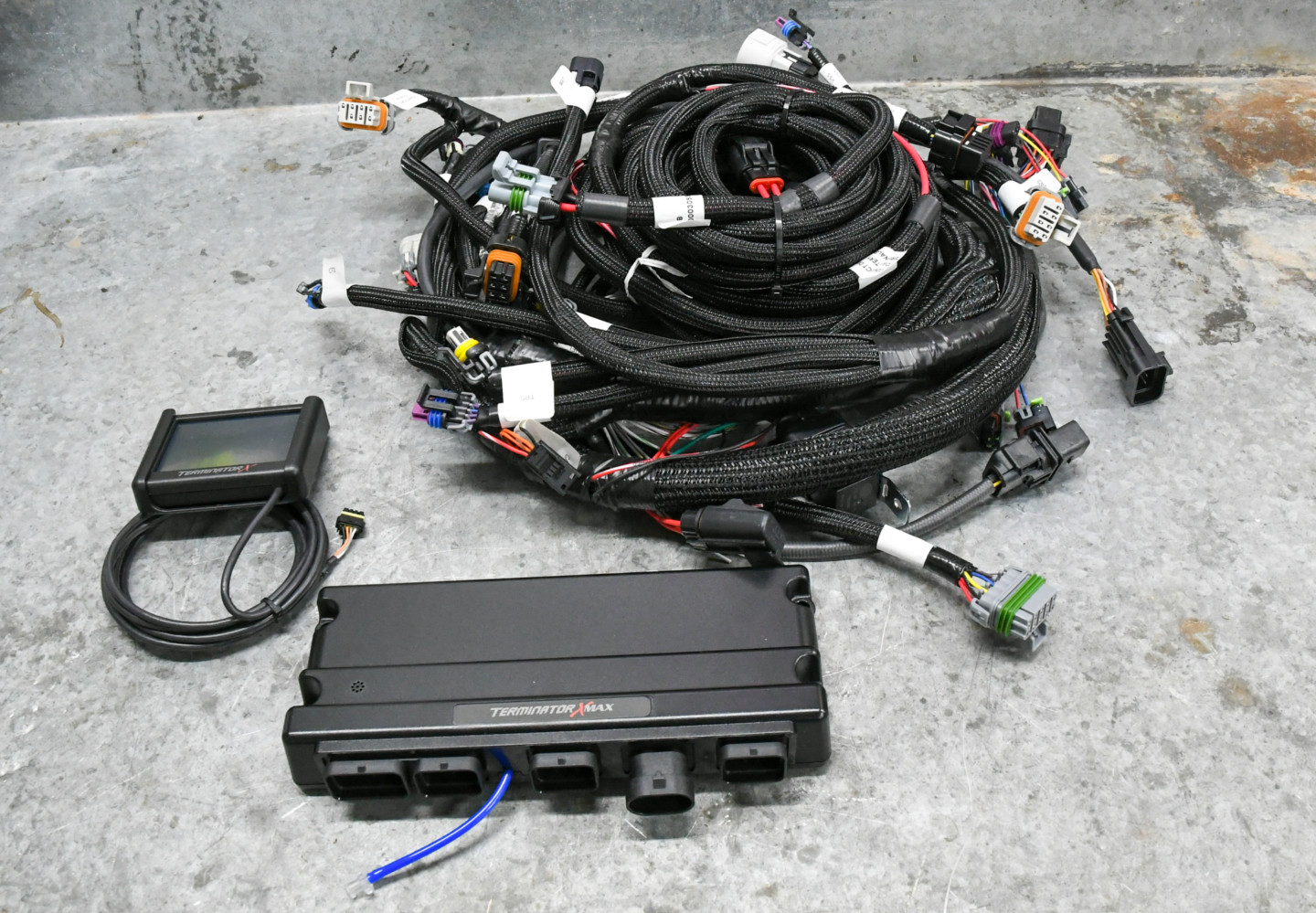
The Terminator X Max includes everything you need to install the system on a vehicle. We opted for the 3.5-inch screen as part of the package.
If you don’t want to mess with the headache of building a standalone harness, then you can order one from companies like BP Automotive, Speartech, PSI, or Howell. Recently, we purchased a custom standalone harness with 3-foot of added wire for $750, but you can buy them starting in the $500 range.
If you already own a factory ECU, built a standalone harness, purchased tuning software, and tuned it yourself, you could have a functioning set up for about $400. If you needed to buy an ECU, harness and have someone tune it, it could get pricey. We reached out to Casey Rance, Owner of Mailordertuner.com, to see what that would cost.
“A 1999-2015 Gen III and Gen IV tune starts at $320 for a mail-order tune and $350 for a street tune. If you want to put it on the dyno, it’s $500. If you have a boosted application, you are looking at $500 for a standard tune,” explained Rance. By our calculations, with Rance tuning an LS swap, it would cost around $895 for a naturally-aspirated setup and $1,150 for a boosted application, which puts it right at the Terminator X and Terminator X Max price points. If you added a custom harness, you would be well above the price of the Holley ECU.
GM ECU Pros
LS and LT ECUs are more than sufficient for a stock or a mildly modified engine and offer enough tunability for most low horsepower builds. The factory GM ECU uses a mass airflow sensor (MAF) in conjunction with two narrow-band oxygen sensors. Rance said, “MAF-based tuning is the best way to tune a vehicle. Literally, every modern car has one, and it’s an excellent tool. Narrowband O2s are also good. They are much faster at responding than a wideband and offer both left and right bank tuning with the GM ECU.”
GM ECU Cons
While the OEM ECU sounds like a solid choice, it has its shortcomings, too, especially when you get into power adders. Let’s use nitrous, for example. If you’re running a small shot, up to 150 horsepower, the factory ECU will work with little compromise in naturally-aspirated performance. The problem is, this ECU can’t differentiate when the nitrous is on or off. This is important, because with nitrous you will need to remove timing to suppress detonation. Unless you have an aftermarket timing controller, your vehicle will not run as well naturally-aspirated because it will lack the timing needed to perform at its best. This problem only compounds with a larger hit of nitrous. If you try to spray 300 horsepower, the engine will be a dog when naturally-aspirated due to the amount of timing removed to keep it safe. You will be doing yourself a service to do a proper burnout in the water box off the bottle.
Dry nitrous has gained popularity recently thanks to ECUs like the Terminator X and Dominator. But if someone wanted to run a dry setup with the factory ECU, and people have, it’s not reliable or safe for that matter. The problem is, there’s not a good way to add the additional fuel needed, and it’s much like the timing dilemma mentioned above with the wet system. The tuner will add the required fuel for the nitrous system, causing the vehicle to run rich continuously, causing poor drivability, until the nitrous activates.
The biggest problem with the factory ECU is the lack of safeguards. “There are zero safety precautions with the factory GM unit. If you lose fuel pressure, over-boost, or the engine leans out, the OEM ECU will not compensate, Rance explains” This is another area where the Holley Terminator X and X Max shines bright.
Holley’s Terminator X And X Max
The Terminator X series has a ton of features that are way ahead of the GM ECU when it comes to engines with modifications. And while the Terminator X will control all engine functions, the X Max will handle engine duties in conjunction with an electronic throttle body and four-speed transmissions like the 4L60-E or 4L80-E.
Terminator X Max Features and Benefits:
- Plug and play LS engine control
- GM Drive-by-Wire throttle body control
- GM Transmission Control (4L60/4L80)
- Genuine Bosch LSU 4.9 Wideband Control
- On-Board Diagnostic LEDS for ECU Power: Engine Run, Wideband Status, TPS Calibration, Crank Signal, Cam Signal
- MAP Sensor Vacuum Hose Adapters
- 4 Inputs: 12v, Ground, 5v, and Frequency, for things such as additional pressure sensors, or activation triggers for nitrous activation, or a trans brake (Fuel and Oil Pressure Inputs are Pre-terminated)
- 4 Outputs: Ground, PWM – for accessories such as; fans, boost control, nitrous control, IAC Kit, and more
- Boost Control: Boost vs. Time, Boost vs. Gear, Boost vs. RPM, Boost vs. Speed, Boost Safeties
- Nitrous Control: Single Channel of Wet or Dry, Progressive or Non-Progressive, Rich/Lean Safeties and Target Closed Loop Air-Fuel Ratio (AFR)
- Advanced Tables: 4x 1D Tables, 1x 1D per Gear Table, 4x 2D Tables, 1x 2D per Gear Table
- Integrated Data Logging to the 3.5-inch Handheld SD Card
- Free EFI Tuning Software for complete control of your Terminator X Powerplant
The Terminator X Max includes a harness for the engine as well as the transmission. All of the connectors are labeled, making the installation simple.
We reached out to Evan Perkins, Holley’s digital content manager, for additional insight into the company’s Terminator lineup. Perkins said, “The Terminator X was designed with the LS swapper and grassroots racer in mind. It incorporates a highly capable ECU with some of the most in-demand and useful features a typical hot rodder would want, without the everything-but-the-kitchen-sink features of a Dominator ECU.”
Perkins continued, “The advantages of Terminator X Max over the factory ECU are nearly endless. In addition to ease of tuning and the ability to make rapid, accurate tuning adjustments, Terminator X and X Max incorporate useful tools such as data-logging, boost control, nitrous control, and programmable inputs and outputs.” And Perkins brings up a lot of great points here that we will dissect later.
Terminator X Tuning
We have dabbled in tuning with the factory ECU just enough to know; it’s not that easy. Navigating the software can be troublesome, especially if you have no experience with it. This is why companies like Rance’s Mail Order Tuner exist. They have logged thousands of hours tuning and adjusting the factory ECU’s and have it down to a science.
So, how hard is it to tune the Terminator X compared to the GM ECU?
“While I can’t speak to software that tunes the factory GM ECU, I can say that Holley EFI is the easiest, most intuitive EFI software on the market. Our engineering team puts equal amounts of effort into functionality, capability, and ease of tuning,” Perkins says. “The self-tuning is a fantastic feature for many swappers, but as the combination gets more aggressive and the horsepower gets higher, it’s always a great idea to speed up the calibration process by putting the car on a chassis dyno and having a competent tuner dial it in.” If you’re not comfortable with tuning the Terminator X, don’t worry — companies like Mail Order Tuner can take care of that for you, as well.
Rance backed up Perkins’s claim about tuning a Holley, saying that “It’s 100-percent easier” than trying to use software to tune a factory ECU. “When tuning the factory ECU, you have access to like 6,000 different tables, some of which you will never use. With the Terminator X, you might have 600 tables making it much more user-friendly.”
Safety First
Another area where Terminator X tends to eclipse a factory GM ECU is with safeguards. And unlike the GM ECU, these units offer a ton of them. Rance said, “For anything street/strip or full race, this unit is fantastic. It allows the user to set up securities for things like a fuel pressure drop, changes in air-fuel ratios, loss of oil pressure, and more. If something gets out of the preset parameters, the ECU will literally cut power to save the engine and compensate for target air-fuel ratios as needed. The factory GM computer will not do any of that.” And Rance is right. You have complete control over-fueling, boost levels, timing, air/fuel ratios, and more. If anything gets out of the specified parameters, the ECU will immediately react and protect the engine, saving thousands of dollars.
Terminator X And X Max Drawbacks
Even with all the advancements of Holley’s Terminator X over a factory ECU, and there are many, it’s not a one-stop solution for every single application. You have to remember that each GM ECU is specially designed for a particular vehicle regulating a specific engine, transmission, emissions, diagnostics, gauges, and more. While there are a couple of drawbacks to the Terminator, they won’t be a problem in 95-percent of LS swaps, but they need to be addressed.
Electronic Factory Gauges
The first problem we will address is the lack of input to a factory gauge set. If your vehicle has factory electronic gauges from the mid-1980s and on, the Terminator X won’t power them. However, this is an easy dilemma to fix. All you need to do is order a Terminator X with a digital screen. Holley has several displays of various sizes that will work and allow you to monitor the engine’s vitals at a glance.
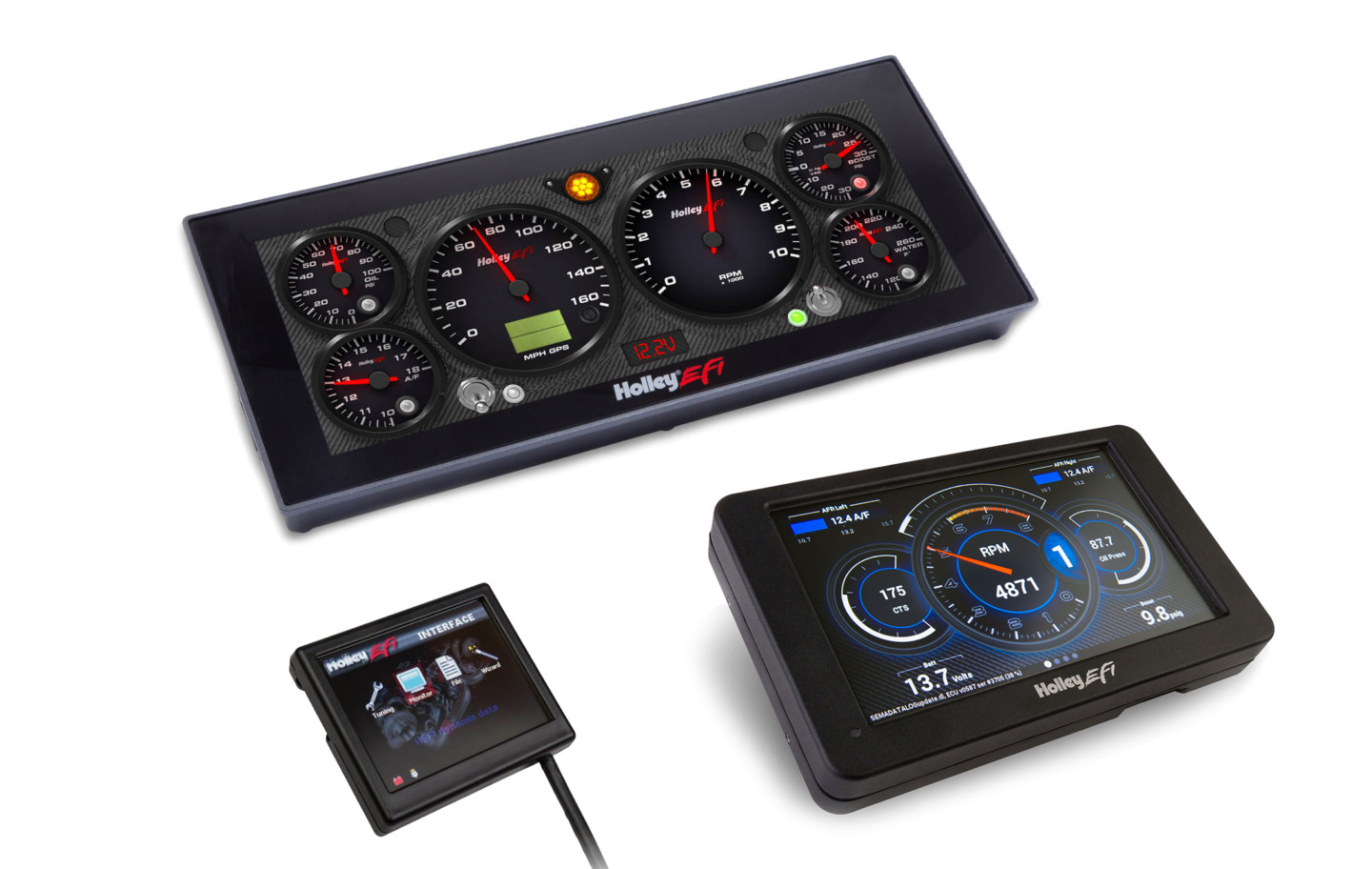
Holley offers three different digital displays that are compatible with the Terminator X and X Max. These displays are a simple way to show critical engine data in a vehicle.
Transmission Limitations
The Terminator X and X Max are both compatible with the new LT series engines, but at this time, the X Max will not operate anything more than a four-speed automatic transmission. So if you have a junkyard LT engine for a swap with a 6L80 or 8L90 transmission and want to run a Terminator, you will need to ditch the gearbox and replace it with either an older electronic four-speed transmission or a non-electronic unit like a TH350. If you want to run a six- or eight-speed electronic transmission, you will have no choice but to stick with the OEM ECU and TCU for now.
Diagnostics
Unlike the factory ECU, the Terminator X and X Max do not offer a check engine light or trouble codes. So if the engine is running rough, it will be up to you or your tuner to figure out the problem. Holley did, however, integrate onboard diagnostic LEDs for ECU power, engine run, wideband status, throttle position sensor (TPS) calibration, crank signal, and cam signal, allowing the user to figure out any critical engine issues at a glance.
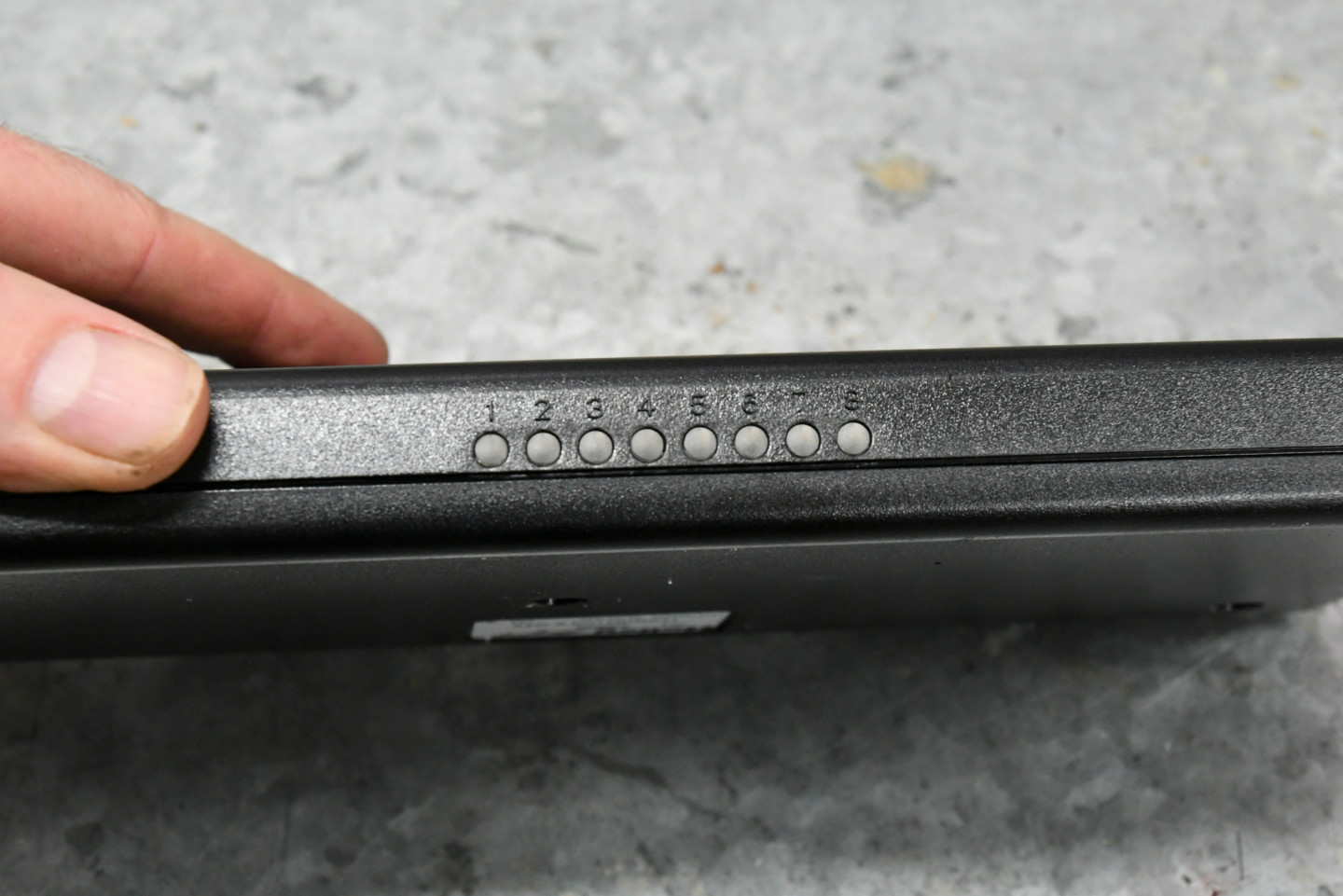
Holley integrated onboard diagnostic LEDs for ECU power, engine run, wideband status, throttle position sensor (TPS) calibration, crank signal, and cam signal.
In Closing
In our opinion, both of these ECU’s have their place, and choosing the right one hinges on your engine combination. Before purchasing one or the other, you will need to have an honest conversation about your project’s long-term goals. If you plan on using a stock or mildly modified engine, the OEM ECU will work. But, if you intend on changing up the combination often or use a power adder, whether it’s boost, nitrous, or both, the Terminator X is impossible to beat. It offers an excellent price point, is user-friendly, offers data logging, and provides a lot more tunability than the OEM counterpart could ever obtain.
Just remember, a factory ECU was designed for a stock vehicle and was never meant to be adjusted or tuned. Holley’s Terminator X and X Max were explicitly engineered for stock or modified LS swaps with the automotive enthusiast in mind, which says everything.




